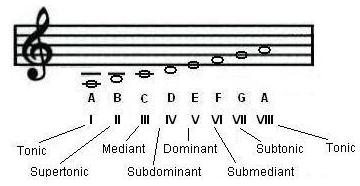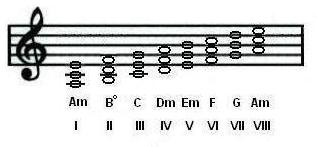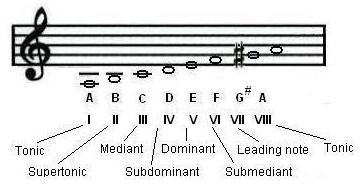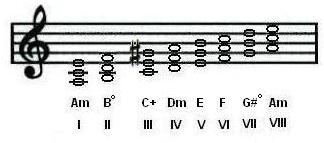
[Teaching Skills] [Music Skills] [Business Skills] [Aspiring Teachers] [New Teachers] [Experienced Teachers]
Teaching Skills > What to Teach > Teaching Materials > Theory Development - Harmonising Minor Scales
Description: Minor song construction - a printer friendly explanation of harmonising minor scales to triads.
The A Natural Minor scale comprises the same notes as the C Major scale:

Note that the generic (non-key specific) naming and numbering of the degrees of the scale is similar to that of the major scale, but the Leading Note is renamed 'Subtonic' as it is now the flatted 7th note which does not work in the same way as the natural 7th at all.
Here is the A Natural minor scale Harmonised. Note that the sequence of chords is identical to those produced by harmonising the C Major scale - but starting on the sixth degree. This is why we refer to these keys as relative.

The A Harmonic minor scale restores the Leading note by sharping the G to G#:

When harmonised this produced an altered series of chords including an Augmented chord built on the III degree of the scale, a Major chord on the V and a second diminished triad built on the Leading note:

This set of chords tends to improve the harmonisation of melodies written in minor keys and is generally more widely used for this reason.
|
Copyright ©2002, 2009 Nick Minnion. This material may be freely copied and distributed providing that this copyright notice including the website address is included in full. This material may not be included in any publication offered for sale without the written agreement of the copyright holder. For further information on this and related articles please visit: www.TeachGuitar.com. |